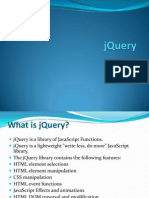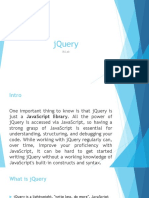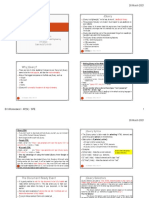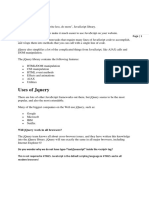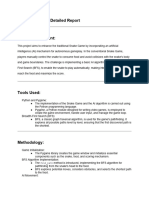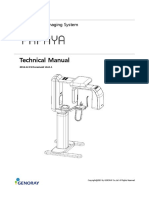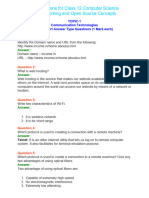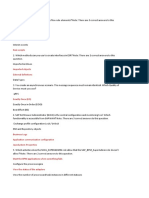0% found this document useful (0 votes)
22 views17 pages06 - Jquery
The document provides an overview of jQuery, a lightweight JavaScript library designed to simplify web programming by allowing developers to perform complex tasks with minimal code. It covers key features such as HTML/DOM manipulation, event handling, and effects, along with instructions on how to add jQuery to web pages via downloads or CDNs. Additionally, it includes examples of jQuery syntax, selectors, and event methods to demonstrate its practical applications.
Uploaded by
Kiap R14Copyright
© © All Rights Reserved
We take content rights seriously. If you suspect this is your content, claim it here.
Available Formats
Download as PDF, TXT or read online on Scribd
0% found this document useful (0 votes)
22 views17 pages06 - Jquery
The document provides an overview of jQuery, a lightweight JavaScript library designed to simplify web programming by allowing developers to perform complex tasks with minimal code. It covers key features such as HTML/DOM manipulation, event handling, and effects, along with instructions on how to add jQuery to web pages via downloads or CDNs. Additionally, it includes examples of jQuery syntax, selectors, and event methods to demonstrate its practical applications.
Uploaded by
Kiap R14Copyright
© © All Rights Reserved
We take content rights seriously. If you suspect this is your content, claim it here.
Available Formats
Download as PDF, TXT or read online on Scribd
/ 17


